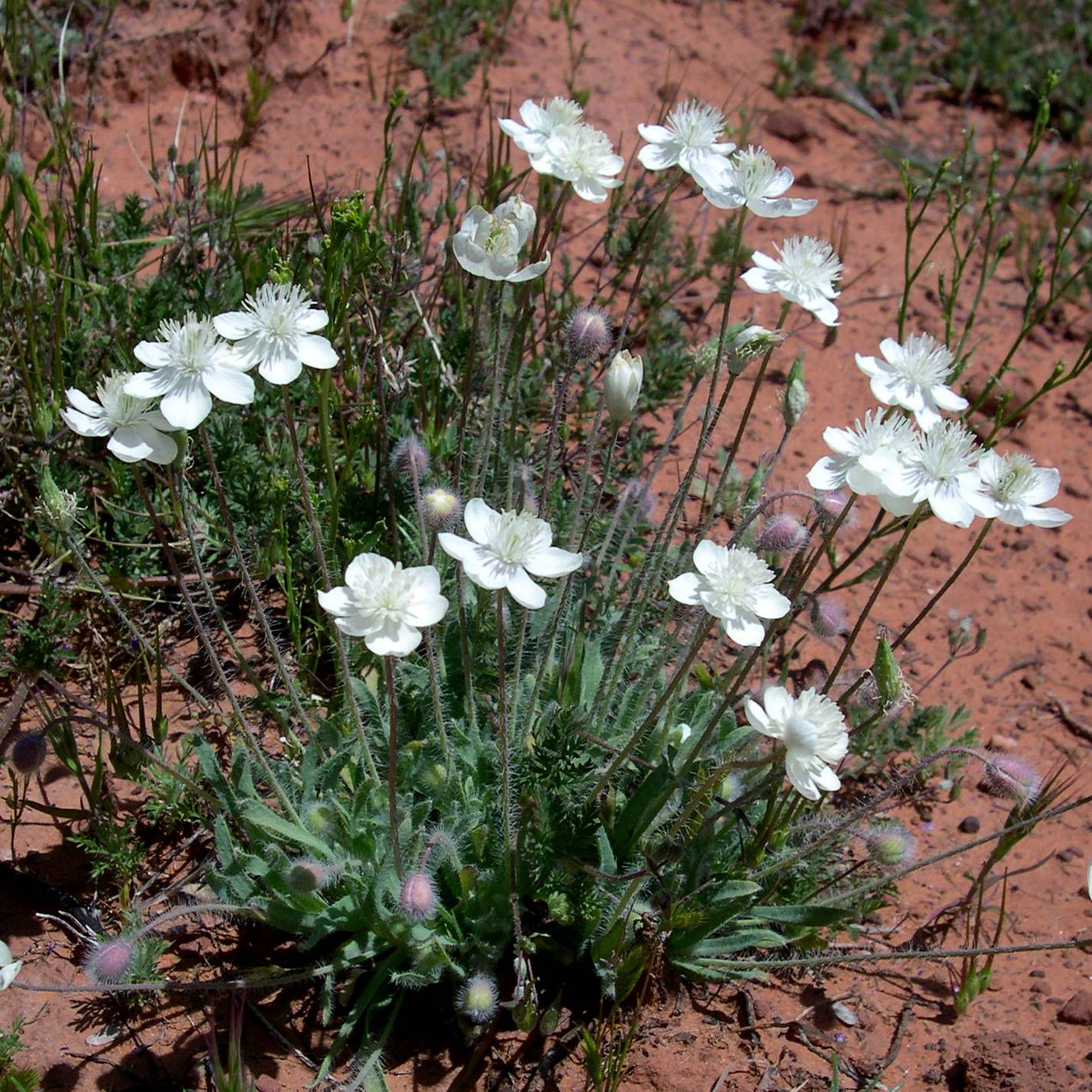Papaveraceae
|
Papaveraceae |
|
|
Herbs or subshrubs, shrubs, or small trees , annual, biennial, or perennial, scapose or caulescent, usually from taproots, sometimes from rhizomes; sap clear, white, or colored, often sticky. Stems leafy or naked, erect, spreading, or decumbent, simple or branching. Leaves basal and/or cauline, alternate to opposite or whorled, simple, without stipules, petiolate or sessile; blade unlobed or with 1-3 odd-pinnate, subpalmate, or palmate orders of lobes. Inflorescences axillary or terminal, unifloral or else multifloral and cymiform, racemose, umbelliform, corybiform, or paniculate, pedunculate or subsessile; bracts usually present. Flowers radially symmetric, pedicellate or sessile; receptacle sometimes expanded and forming cup or ring beneath calyx (only in Eschscholzia , Meconella , and Platystemon ); perianth and androecium sometimes perigynous; sepals caducous, 2 or 3, distinct or connate, usually obovate; petals distinct, usually obovate, mostly 2 times number of sepals, sometimes more or absent; stamens many or 4-15 (only in Meconella and Canbya ); anthers 2-locular; pistil 1, 2-18[-22]-carpellate; ovary 1-2-locular or incompletely to completely multilocular by placental intrusion; placentas 2 or more, parietal; style 1 or absent; stigmas or stigma lobes 2-many. Fruits capsular, dehiscence valvate, poricidal, or transverse, or carpels dissociating and breaking transversely into 1-seeded segments (only in Platystemon ). Seeds usually many, small, sometimes arillate or carunculate. According to W. R. Ernst (1962b), Papaveraceae 'may be divided conveniently into four subfamilies.' His scheme is followed here, but with the subfamilies taken up in alphabetic order; they seem to be natural groups, but their phylogenetic interrelationships are not yet clear. Similarly, the evolutionary relationships within the subfamilies remain ambiguous, and the genera in each are listed alphabetically. Subfamily Chelidonioideae Ernst includes genera 1-5; subf. Eschscholzioideae Ernst, genera 6-7; subf. Papavaroideae Ernst, genera 8-14; and subf. Platostamenoideae Ernst, genera 15-17. Hunnemannia fumariifolia Sweet, native to the highlands of Mexico, is occasionally found in California as a garden escape. A glabrous perennial with glaucous, blue-gray stem and leaves, and glossy, yellow petals, it bears an overall resemblance to Eschscholzia but has distinct sepals, no receptacular cup, and a peltate stigma. Below, it would key out as Arctomecon .
PLANTS: Ours annual or perennial herbs, with taproot or fibrous roots, the sap watery or colored. LEAVES: basal, cauline, or basal and cauline, alternate, opposite or whorled, without stipules, linear, cuneate and apically 3-5-lobed, or shallowly to deeply ternately or pinnately lobed. FLOWERS: perfect, solitary or cymose, actinomorphic, hypogynous or perigynous; sepals 2 or 3, caducous; petals 4-6, early deciduous or persistent; stamens 12-many; pistil of 2-6 or more united carpels or of 6 or more tardily separating carpels. FRUITS: unilocular capsules with valvate dehiscence, splitting from the apex or base, with few to numerous seeds, or a group of several moniliform (like a string of beads) loosely associated carpels that break transversely between the seeds. SEEDS: ovoid, smooth, reticulate, ridged or pitted, aril present or absent. NOTES: 26 genera, 200 spp., chiefly n temperate. Includes the opium poppy, the source of the opiate drugs. REFERENCES: Ownbey, Gerald B., Jeffrey W. Brasher, and Curtis Clark. 1998 Papaveraceae. J. Ariz. - Nev. Acad. Sci. 30(2): 120. |
|
